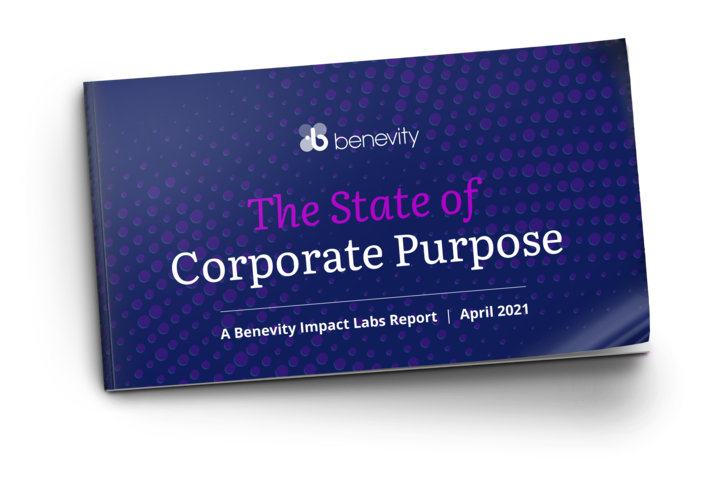In 2020, companies issued fewer grants overall but gave more money. Our data shows a 28% decrease in the total number of grants issued year over year, with a 60% increase in total dollars granted.
One of the top cause categories supported through granting was human services, which includes organizations like family violence shelters, seniors’ centers and emergency assistance for food, clothing or cash. Nonprofits in the categories of food, agriculture and nutrition, which includes food banks and pantries, and civil rights, social action and advocacy moved up the ranks by four spots and seven spots respectively. In addition, companies maintained support for their existing cause partners, with funding for stalwart causes like education and the arts remaining relatively unchanged.
In 2020, the nonprofit sector was thrown into a crisis of its own as the economic fallout of COVID-19 meant more people relied on it's services. At the same time, the fundraising and volunteering events they relied on had to be cancelled. Many nonprofits worried that support might grind to a halt and they’d have to close their doors, further exacerbating the effect of the pandemic on vulnerable communities. Meanwhile, organizations on the front lines of COVID 19 needed more flexibility to move fast in a rapidly changing environment. The pivot to work from home, the switch to virtual volunteering and online fundraising, and the need to break through the noise in a particularly event-driven time were just some of the challenges nonprofits experienced last year.
Companies had to adapt in the ways they supported non-profits and many jumped into action immediately, shifting their corporate granting strategies to become more multifaceted and less restrictive.
Granting strategies took a
three-pronged approach
1
Larger, more strategic grants
2
Smaller community grants
3
Fewer restrictions
Larger, More Strategic Grants
Smaller community grants
Many companies mobilized quickly to provide emergency funding or to unlock more grants by redeploying unused budgets marked for sponsorships or physical events. In addition, 25% of companies have integrated granting and employee engagement programs. Aside from rewarding volunteers or teams of volunteers with grants to their preferred organizations, we saw continued interest in employee-nominated programs.
The most notable trend that emerged in 2020 was deeper corporate engagement with affinity or employee resource groups (ERGs) and local employee champions to help inform companies’ nonprofit engagement strategies and partnerships. Corporate purpose professionals and DEIB leaders leaned on these volunteer groups to help identify and support the community organizations their people care about in a bottom-up approach, empowering individuals to influence the company’s granting strategy.

76%
of Americans say supporting companies that are addressing social and environmental issues helps them feel they are doing their part.
Source: 2019 Porter Novelli/Cone Purpose Biometrics Study
“This shift has been so helpful and I hope it is a lasting change. The changes to unrestricted dollars have been meaningful and allowed our organization to make critical decisions that are best for the youth we serve, rather than navigating the demands of funding restrictions. It’s been transformational for our work.”
— Ranna Daud
Executive Director,
After-School All-Stars Puget Sound
Trust-based granting
When crisis hit, many companies reached out to their nonprofit partners to see how they could best support them, and unsurprisingly the resounding answer was flexibility.
Companies responded by streamlining their grants request forms and reporting, while moving to unrestricted funding that could be used for general operating costs — removing unnecessary burden on nonprofits. And many say they have no plans to change that strategy.
Thanks to 2020, trust-based philanthropy is firmly taking hold, much to the benefit of the nonprofit sector.
Kroger’s response to the COVID-19 pandemic has focused on keeping retail stores safe and stocked for their customers; improving access to healthy, nutritious food; and supporting national and local nonprofit partners who are helping millions of people deal with the pandemic’s economic impacts.
COVID-19 shined a light on Kroger’s Zero Hunger | Zero Waste mission and social impact plan — highlighting the need for a more connected and resilient food system where surplus is redistributed to feed people in need instead of it being sent to landfills.
Kroger and the Kroger Foundation office, through their partnership with Feeding America, also directed $10,200,000 in charitable giving in 2020 to their network of food banks in their markets. This includes funds directed through The Kroger Co. Zero Hunger | Zero Waste Foundation’s Emergency COVID-19 Response Fund to Feeding America, No Kid Hungry and other partners. In all, the company directed more than $16,500,000 in charitable COVID-19 relief to support local and regional organizations and help their communities recover.
“We took our entire granting and went to unrestricted general operating support. We suspended and ultimately canceled our reporting requirements for the year … all of this work, leaning into trust-based relationships, really set us up for what’s going to happen for us in 2021.
— Noah Salata
Community Partnership Consultant, AFI
Future-proofing community investments
The pivots made to corporate granting strategies undoubtedly made a significant difference for large and small nonprofits alike. But these organizations, which have become more essential to their communities than ever, are not free and clear yet. A March 2021 report by research group Candid and the Center for Disaster Philanthropy said the financial strain of the COVID-19 pandemic has put more than one in three U.S. nonprofits at risk of closing within the next two years, and it would take a year and a half to return to pre-pandemic levels of employment among nonprofits.
As companies continue to partner closely with nonprofits during this tenuous time, and as all trends lean toward democratization and empowerment, we expect trust-based philanthropy to move from the fringes into the more established realms of corporate programs.
Enduring a prolonged pandemic together will require more trust and collaboration than ever before.

The 2020 Benevity Impact Report
Purpose has been recognized as a key component of long-term business resilience and sustainability — and it's driven a significant increase in all aspects of corporate purpose. The Benevity client community created record-breaking impact in 2020 and we're sharing all the details as part of The State of Corporate Purpose report.


